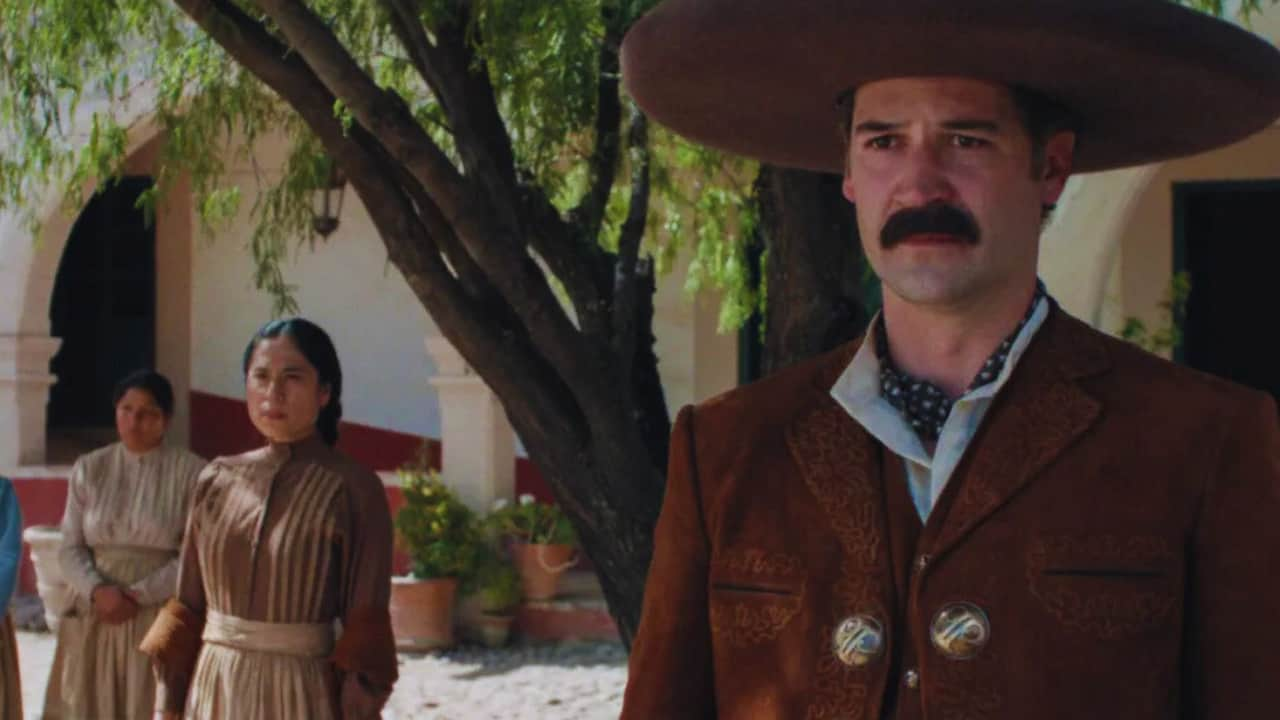Netflix’s Pedro Páramo: A Tale of Two Reviews: When Artistic Vision Meets Literary Legacy
The highly anticipated Netflix adaptation of Juan Rulfo’s seminal 1955 novel “Pedro Páramo” has sparked a fascinating divide in critical reception, offering viewers a complex lens through which to view this landmark of Mexican literature.
Rodrigo Prieto, the acclaimed filmmaker known for “Barbie” and “Killers of the Flower Moon,” steps into the director’s chair for the first time with this ambitious project. The film stars Tenoch Huerta as Juan Preciado and Manuel García-Rulfo in the titular role of Pedro Páramo, bringing to life a story that weaves between reality and the supernatural.
The Visual Symphony
Prieto’s background as a master filmmaker shines through in several aspects of the film. Working alongside Nico Aguilar, he crafts striking imagery that captures the essence of Comala, the ghost town at the heart of the narrative.
Carefully composed shots, such as Pedro sitting alone at an empty table, water rushing through irrigation ditches, and the sun-bleached buildings of present-day Comala, tell their own stories through the film’s visual language.
A Tale of Two Timelines
The story follows Juan Preciado’s journey to find his father, Pedro Páramo, in the mysterious town of Comala. As he encounters various spirits, the narrative splits between past and present, revealing the complex web of relationships and power that defined his father’s life. Various degrees of success handle this temporal dance; some transitions are seamless, while others feel more rigid and conventional.
Sound and silence
One of the film’s strongest elements is its sound design, which creates an immersive supernatural atmosphere. Hushed whispers, echoing footsteps, and the ambient sounds of Comala work together to build a haunting soundscape that enhances the viewing experience.
The Cast’s Performance
Ilse Salas delivers a standout performance as one of Pedro’s love interests, bringing what critics describe as “caged-animal ferocity” to her role. The supporting cast, including Dolores Heredia, Héctor Kotsifakis, and Mayra Batalla, provides solid backing to the main narrative.
The Challenge of Adaptation
The film faces the monumental task of translating Rulfo’s magical realism to the screen. While it succeeds in capturing the realistic elements of the story, some critics argue it falls short in conveying the novel’s dreamlike quality. Some critics feel that the movie’s duration of over two hours is excessive given the relatively short length of the source material.
Technical Mastery vs. Spiritual Essence
Prieto’s approach to the material shows tremendous respect for the source text, perhaps too much. While the technical elements—cinematography, sound design, and performances—are strong, the film sometimes struggles to capture the novel’s ethereal spirit.
The clear delineation between past and present timelines, marked by distinct color palettes, may serve clarity but potentially diminishes the story’s supernatural ambiguity.
The Verdict
“Pedro Páramo” emerges as a technically accomplished film that showcases Prieto’s visual expertise while sometimes missing the magical elements that made Rulfo’s novel revolutionary. It’s a respectful adaptation that may work better for viewers unfamiliar with the source material than for die-hard fans of the novel.
The film represents an important milestone in Mexican cinema, bringing a beloved literary work to a global audience through Netflix’s platform. While it may not fully capture the novel’s revolutionary spirit, it succeeds in creating a visually striking and atmospherically rich experience that adds to the conversation about how to adapt magical realism for the screen.
For those interested in Mexican literature, magical realism, or the evolution of Latin American cinema, “Pedro Páramo” offers a thoughtful, if imperfect, adaptation that’s worth adding to your watchlist.
